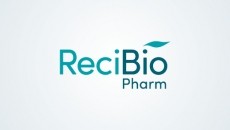Drug delivery laser aims to P.L.E.A.S.E.
Receipt of the CE mark is required before a medical device can be sold to countries in the European Economic Area and marks another milestone in P.L.E.A.S.E.’s development.
P.L.E.A.S.E. is a handheld laser device that creates micropores in the epidermis, providing channels through which high molecular weight drugs can pass.
The depth and distribution of these pores can be tailored to the administration of specific drugs, although the device does not penetrate into the dermis to ensure there is no damage to nerves and blood vessels.
Once the micropores have been created a patch containing the therapeutic is applied to the area, allowing the drug to pass through the epidermis and into the bloodstream.
The safety of this has been investigated in a clinical trial, which sought to ensure that the laser is not too painful and does not cause thermal damage.
P.L.E.A.S.E. was used on 12 healthy volunteers, of which 70 per cent experienced slight discomfort from the laser, with a further 20 per cent feeling none.
Three patients had biopsies to assess thermal damage of tissue surrounding the pore but none was detected. Following the success of this initial study Pantec has initiated a clinical trial investigating the delivery of an in vitro fertilisation (IVF) hormone.
This is a collaboration between Pantec, a pharmaceutical company and a patch development and manufacturing firm. The collaboration entails the development of transdermal patch systems, clinical results of which are due to be published in 2009.
Pantec is financing the entire project and the two collaborating companies have not been named. Further partnerships following a similar "flexible three pillar" model are being sought by Pantec.
Preclinical work on show at AAPS
Potential partners for Pantec may have been interested to see the research posters on display at this year’s AAPS, detailing investigations into the delivery of various macromolecules.
The research included P.L.E.A.S.E.’s impact on the delivery of triptorelin, human growth hormone and follicle stimulating hormone. This demonstrated that the device was can enable the delivery of macromolecules with molecular weights of up to 30kDa through porcine skin.
Another poster was presented on the delivery of diclofenac, which concluded that the order of magnitude increases in delivery suggested P.L.E.A.S.E. may be viable for delivering the compound.












